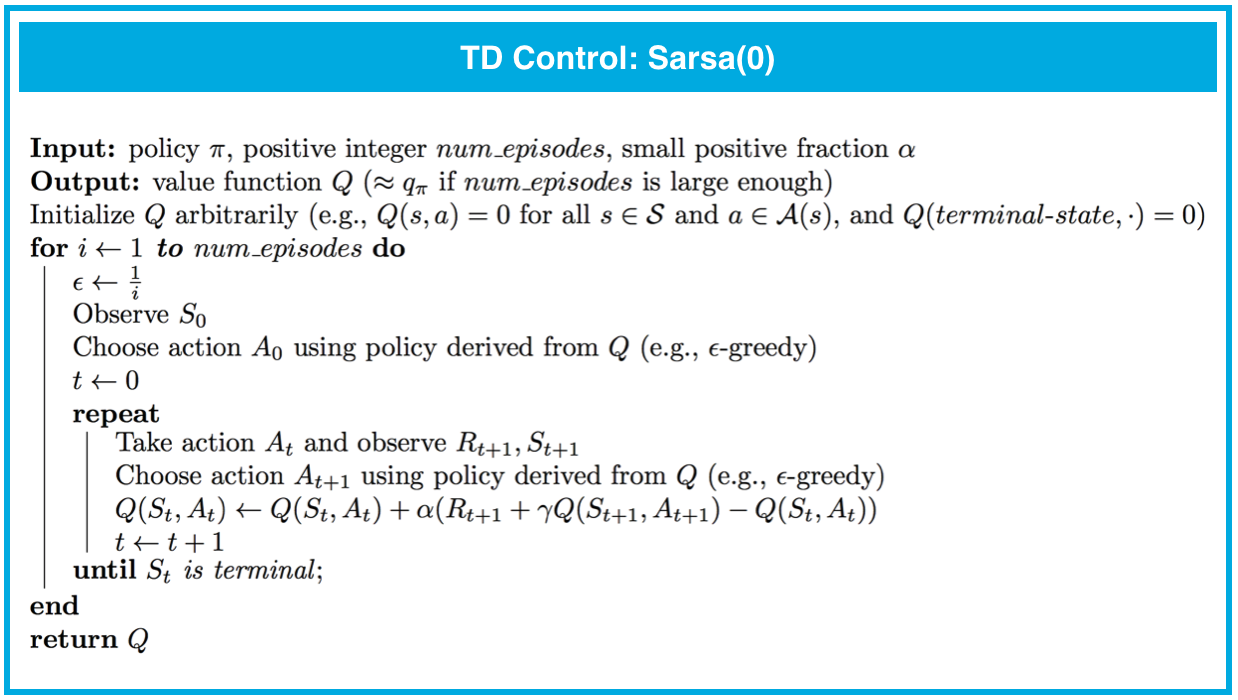08. Implementation
Implementation: Sarsa(0)
The pseudocode for Sarsa (or Sarsa(0)) can be found below.

Sarsa(0) is guaranteed to converge to the optimal action-value function, as long as the step-size parameter \alpha is sufficiently small, and the Greedy in the Limit with Infinite Exploration (GLIE) conditions are met. The GLIE conditions were introduced in the previous lesson, when we learned about MC control. Although there are many ways to satisfy the GLIE conditions, one method involves gradually decaying the value of \epsilon when constructing \epsilon-greedy policies.
In particular, let \epsilon_i correspond to the i-th time step. Then, if we set \epsilon_i such that:
- \epsilon_i > 0 for all time steps i, and
- \epsilon_i decays to zero in the limit as the time step i approaches infinity (that is, \lim_{i\to\infty} \epsilon_i = 0),
then the algorithm is guaranteed to yield a good estimate for q_, as long as we run the algorithm for long enough. A corresponding optimal policy \pi_ can then be quickly obtained by setting \pi_(s) = \arg\max_{a\in\mathcal{A}(s)} q_(s, a) for all s\in\mathcal{S}.
Please use the next concept to complete Part 2: TD Control: Sarsa of Temporal_Difference.ipynb. Remember to save your work!
If you'd like to reference the pseudocode while working on the notebook, you are encouraged to open this sheet in a new window.
Feel free to check your solution by looking at the corresponding section in Temporal_Difference_Solution.ipynb.